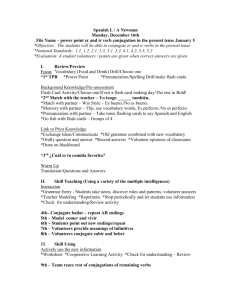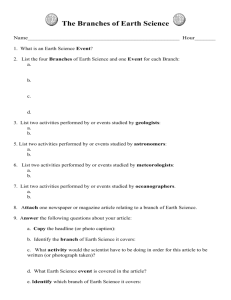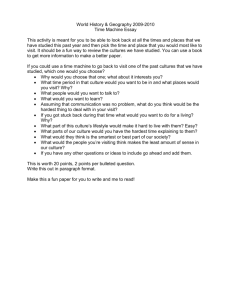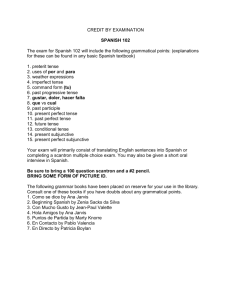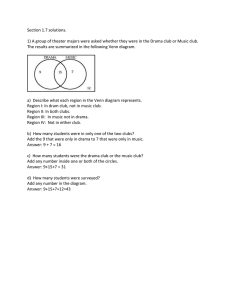spanish i course contents
advertisement
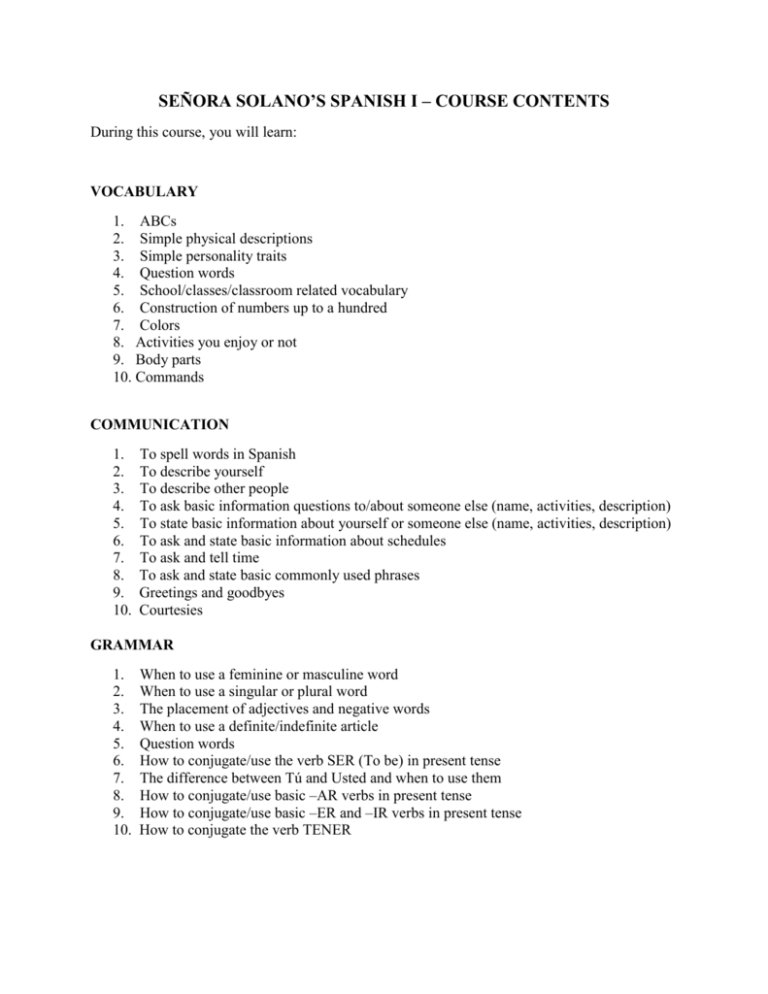
SEÑORA SOLANO’S SPANISH I – COURSE CONTENTS During this course, you will learn: VOCABULARY 1. ABCs 2. Simple physical descriptions 3. Simple personality traits 4. Question words 5. School/classes/classroom related vocabulary 6. Construction of numbers up to a hundred 7. Colors 8. Activities you enjoy or not 9. Body parts 10. Commands COMMUNICATION 1. 2. 3. 4. 5. 6. 7. 8. 9. 10. To spell words in Spanish To describe yourself To describe other people To ask basic information questions to/about someone else (name, activities, description) To state basic information about yourself or someone else (name, activities, description) To ask and state basic information about schedules To ask and tell time To ask and state basic commonly used phrases Greetings and goodbyes Courtesies GRAMMAR 1. 2. 3. 4. 5. 6. 7. 8. 9. 10. When to use a feminine or masculine word When to use a singular or plural word The placement of adjectives and negative words When to use a definite/indefinite article Question words How to conjugate/use the verb SER (To be) in present tense The difference between Tú and Usted and when to use them How to conjugate/use basic –AR verbs in present tense How to conjugate/use basic –ER and –IR verbs in present tense How to conjugate the verb TENER SEÑORA SOLANO’S SPANISH I – COURSE CONTENTS (cont.) During this course, you will learn: CULTURE 1. 2. 3. 4. 5. 6. 7. Differences between races, ethnic backgrounds, and countries of origin Differences between school life in the US and Latin America/Spain Differences about physical descriptions Geographic and Historic information Artistic information Songs and dances Basic information on your specifically assigned country LISTENING 1. Most of what is being said to you even if you cannot reply 2. Most of the questions that the teacher/classmates ask you 3. How to take dictations from your teacher 4. The words of studied songs even if you cannot sing them 5. The sounds of Spanish letters/words even if you cannot reproduce them SPEAKING 1. 2. 3. 4. 5. To respond to basic questions about yourself/others To pronounce studied words even if you do not sound like a native speaker To spell a word out loud even if you don’t know it To ask basic questions To engage in basic dialogues READING 1. 2. 3. 4. Most of the words that appear in the short stories we read in class How to get the gist out of a new story The reasons why some language structures are the way they appear on the text To answer comprehension questions about a reading even if you don’t know all the vocabulary WRITING 1. 2. 3. 4. 5. 6. 7. 8. How to take a dictation of any spelled word even if you don’t know it How to take a dictation of studied words/phrases To create bilingual cross-word puzzles To ask/answer basic questions To create short dialogues To write captions for picture stories To summarize a studied story To write a simple original short story using studied vocabulary
